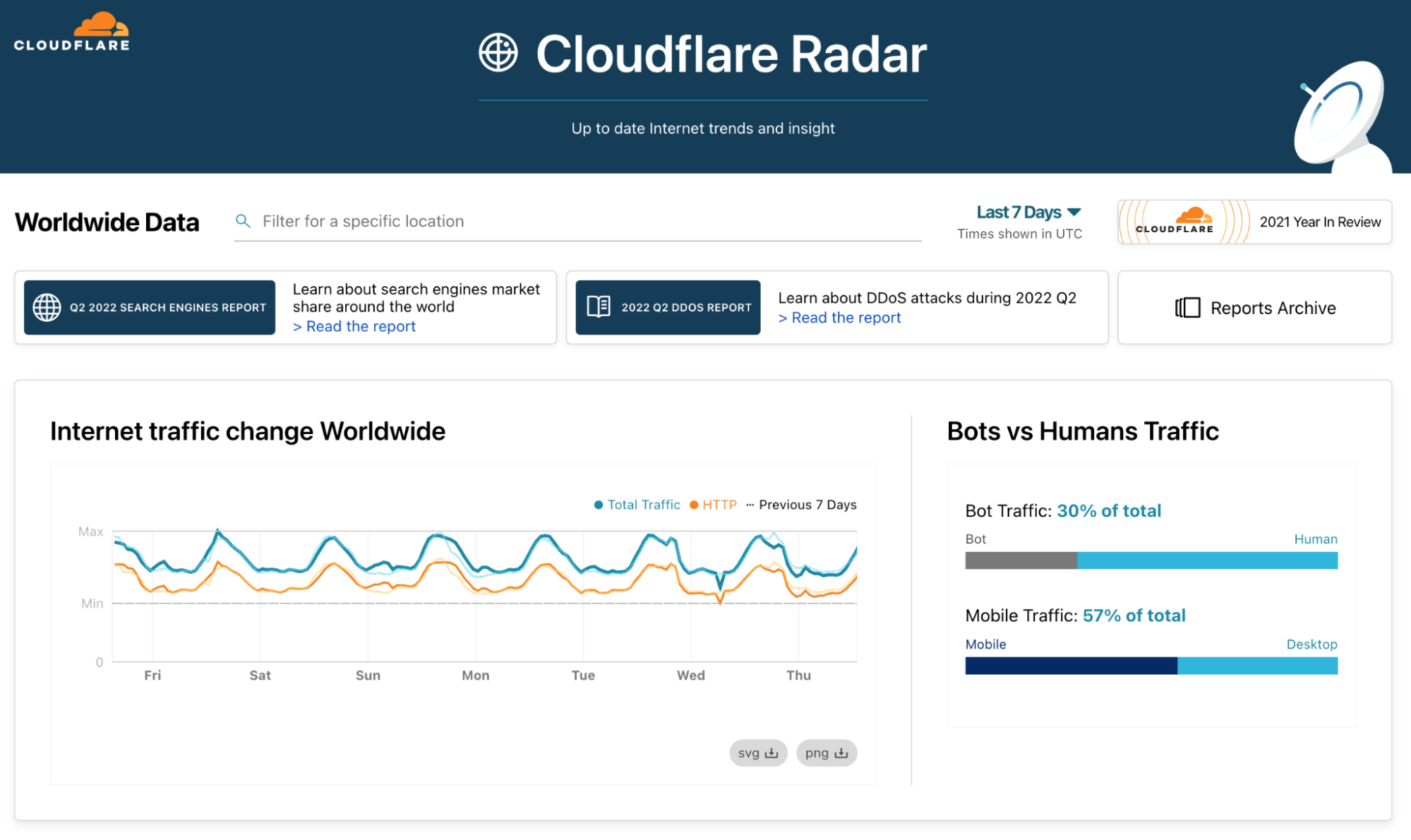Cloudflare Radar: Monitoring the Pulse of the Internet

Cloudflare Radar is a comprehensive platform that provides real-time visibility and insights into the global internet landscape. It leverages Cloudflare’s vast network of servers, located in over 270 global data centers, to capture and analyze massive amounts of data related to internet traffic, security incidents, and performance metrics.

One of the key features of Cloudflare Radar is its real-time monitoring capabilities. The platform constantly monitors and collects data on network traffic, performance, and security events from all corners of the internet. This vast amount of data is then analyzed and processed to provide up-to-date insights into the overall health and integrity of the internet.

Cloudflare Radar offers various tools and visualizations to help users understand and interpret the data collected. These include interactive maps that display the distribution and trends of DDoS attacks, website outages, performance issues, and more. The platform also provides detailed reporting and dashboards that allow users to drill down into specific incidents and events.
By providing real-time visibility and insights into the internet, Cloudflare Radar empowers users with actionable intelligence to proactively address potential threats and optimize their online experiences. It helps researchers, network engineers, security professionals, and website owners better understand the impact of global events, identify emerging cyber threats, and ensure the stability and performance of their online services.
Overall, Cloudflare Radar is an invaluable tool for anyone interested in monitoring the pulse of the internet. It offers comprehensive insights into network traffic, performance, and security events, allowing users to make informed decisions and take proactive measures to protect and optimize their online presence.
